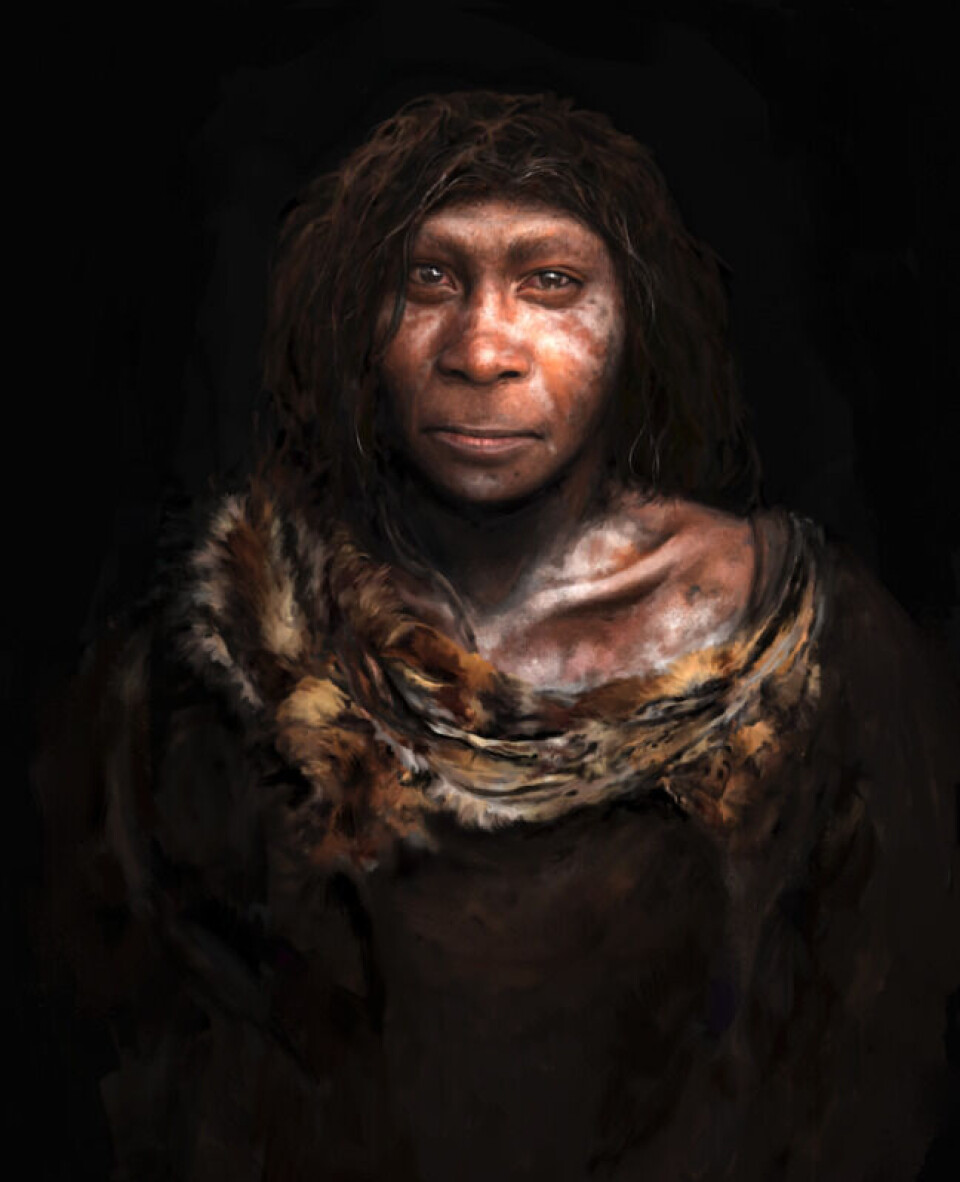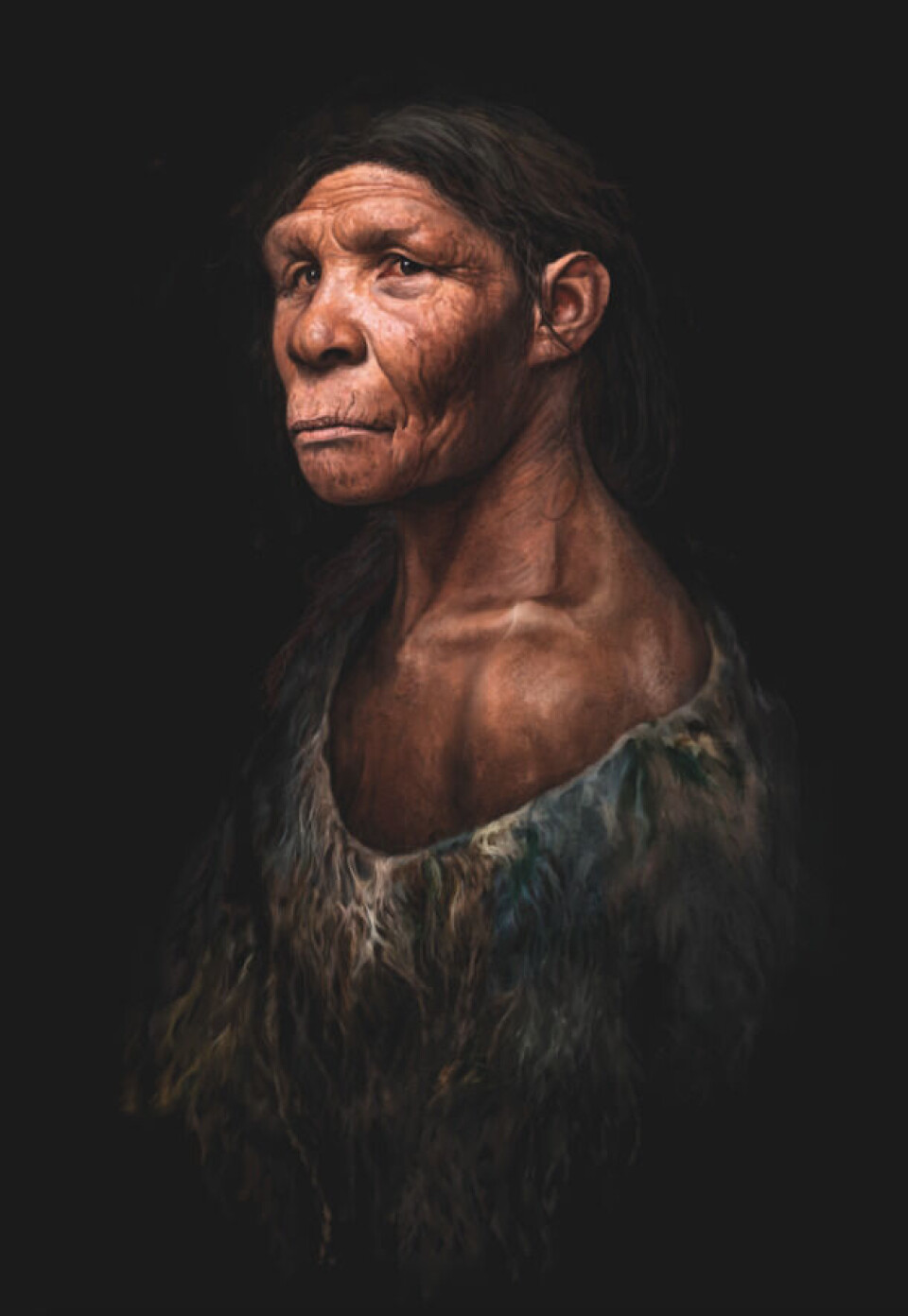THIS ARTICLE/PRESS RELEASE IS PAID FOR AND PRESENTED BY NTNU Norwegian University of Science and Technology - read more

Your relatives of yore slept with these people
You’re probably a bit of a Neanderthal.
No one knows what happened when we, Homo sapiens, first encountered the Neanderthals. But we know we met.
We know that for thousands of years we lived side by side in Europe and Asia. And we know we had children together. So you’re probably carrying around a bit of Neanderthal DNA.
Kind of cool to be part Neanderthal, don’t you think? It’s not as strange an idea as you might think.

Homo stupidus?
When the first Neanderthal skeleton was found in the Neandertal (Neander valley) in Germany in 1856, scientists imagined the person to have been a dull-witted cave dweller. The German zoologist Ernst Haeckel went so far as to give this first individual the name Homo stupidus.
Although the name didn’t stick, the term Neanderthal has been used as a slur since, referring to someone who is primitive and cognitively backward.
The exhibition Neanderthal, which recently opened at the NTNU University Museum in Trondheim, gives us quite a different picture of our close relative.
“This is a fantastic exhibition experience for both children and adults,” says Tove Eivindsen, head of communication at NTNU University Museum.

The intelligent human
“The Neanderthals were intelligent people. They lived in small groups over a huge area for a period of over 300,000 years,” archaeologist Trine Kellberg Nielsen says.
Her research has focused on Neanderthals.
“Neanderthals hunted large animals like elephants and mammoths in small groups. This tells us that they were strategically skilled hunters with a strong ability to cooperate. The fact that they lived for such a long time also shows us that they were able to adapt to different environments,” Kellberg Nielsen says.
The innovative human
Thanks to archaeological discoveries, we now know that the Neanderthals were both handy and creative. They prepared food over fire. Findings of hand axes and other tools show that they were skilled craftspeople and had local craft traditions in various parts of the world.
They were also innovative: In fact, the world’s first known glue was produced by the Neanderthals.
“We’ve found microscopic remains of pitch made from birch bark on the hand axes of the Neanderthals. Pitch is a residual product from making tar and served as a form of ancient glue,” says Kellberg Nielsen. “It was probably used to attach the axes to a handle – so that you wouldn’t risk cutting yourself when using the tool.”

The empathetic human
The Neanderthals also appear to have had an aesthetic sense. We have several examples of their use of beautiful materials, such as rock crystal, in tools. They painted cave walls and collected coral and fossils that they carried with them and perhaps adorned themselves with.
Much evidence also suggests that the Neanderthals were compassionate people. The group was essential for the Neanderthals’ survival, and findings also indicate that they took good care of each other.
“The Neanderthal man found in 1856 had broken his arm at some point. Even though the fracture had healed, it must have been difficult for him to use his arm afterwards,” Kellberg Nielsen says.
She adds that the skeleton of an old Neanderthal man who had advanced gout was found in France.
"He had lost most of his teeth, but still survived for many years afterward. These are two examples indicating that the Neanderthals took care of their sick, injured, and old, which tells us that they were empathetic people,” she says.
The Neanderthals also buried their dead, but we do not know whether this was done for practical reasons or if they had rituals connected to the burial.
How much Neanderthal are you?
Intelligent, creative and compassionate – perhaps it’s not so surprising that our foremothers were so charmed by the Neanderthals that they had children.
All people with a background outside of Africa therefore have some Neanderthal in their DNA. Most are between one and four per cent Neanderthal. Neanderthals never lived in Africa, and that is the reason why people there have little or no trace of Neanderthal genetics.
The Neanderthals died out 40,000 years ago, and we might wonder why they disappeared – while we survived – if they were so smart and capable?
We don’t quite know the answer to that.

Homo sapiens immigrated
The Neanderthals lived alone in Europe for 300,000 years before Homo sapiens arrived. In addition to the fact that Neanderthals lived in small groups, there were never very many of them. Genetic analyses also show very little variation in their genetic material. That might have made them more vulnerable to change.
Perhaps even more important, a wave of Homo sapiens immigrated from Africa to Europe 60,000 to 80,000 years ago – so many of them that they soon outnumbered the Neanderthals.
When the two populations eventually started having children together, the Neanderthal population might have become so diluted by Homo sapiens that they disappeared.
On the other hand, we could argue that they never did completely disappear.
They live on — in you and me.
Read more content from NTNU:
-
Politics on Facebook: Populist parties choose divisive issues on purpose
-
Social media is connected to cyberbullying – but not how we thought
-
Forskere ved NTNU får nesten 24 millioner av EU for å lage nye strømomformere
-
This helps the youngest children enjoy school more
-
Can we tap the ocean’s power to capture carbon?
-
Researchers have uncovered major problems in Norway's salmon industry





































